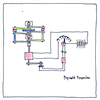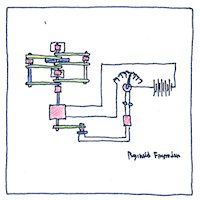Reginald Fessenden
acoustics

|
Sonar
After the Titanic hit the iceberg scientists and inventors began to work on sonar devices. Reginald Fessenden was the first to successfully demonstrate depth sounding, underwater communications, and range detection. The Fessenden oscillator, mounted on the hull of a ship or submarine, generated acoustic signals in water and received echos from icebergs up to two miles away.
Names from acronyms
Sonar is SOund Navigation And Ranging Sodar is SOnic Detection And Ranging Radar is RAdio Detection And Ranging or RAdio Direction And Ranging Lidar is LIght Detection And Ranging Leddar is LED Detection And Ranging
Bats do it
Bats do it. Dolphins do it. Whales do it. Shrews do it. And there’s a blind guy in L.A. who does it using palatal clicks.



The same membrane and coil produced a signal and responded to its echo. Fessenden was also able to send and receive messages in Morse code using the same device.
See also in The book of science:
Readings in wikipedia: